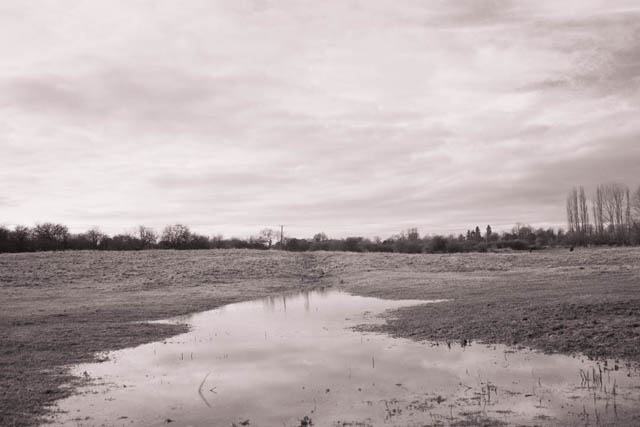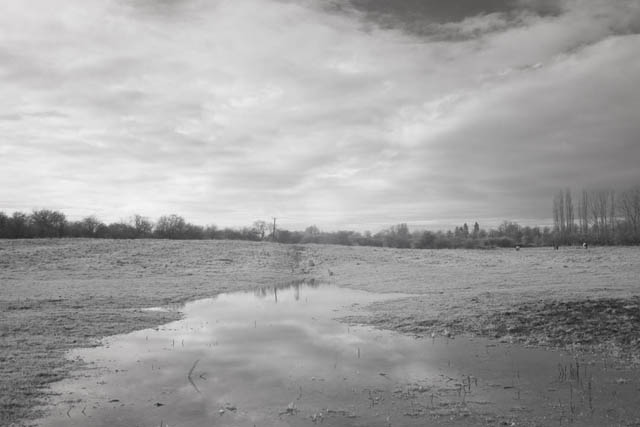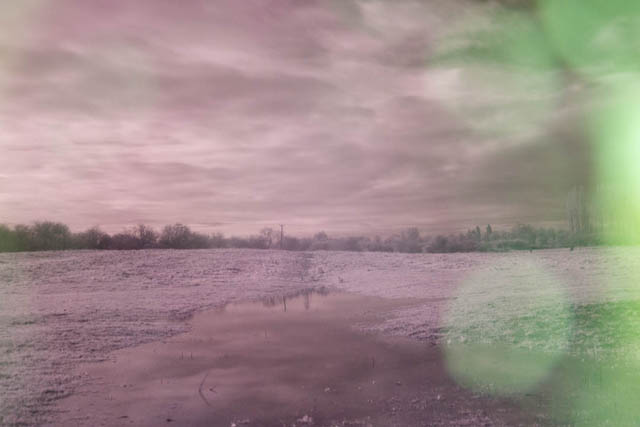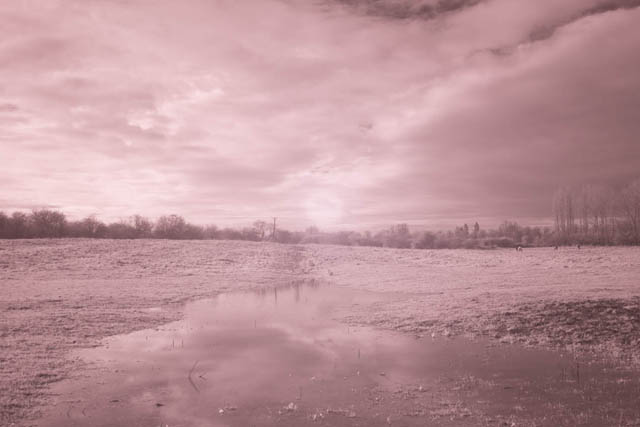I was recently alerted to the fact that it is possible to record UV video with a modern full spectrum converted camera. This got me thinking about recording some Vis-UV-IR video. However, I only have one full spectrum converted camera, so if I wanted to record in Vis and UV and IR simultaneously, how could I record in infrared at the same time as ultraviolet?
Some cameras (notably much older, pre-video models) are sensitive enough to infrared light without being converted, that it is possible to use them for IR photography, so long as you don't mind a long exposure. I decided to check whether my unconverted Fuji X-A1 camera was sensitive to infrared. If it was, then with a very high ISO setting it may be able to record infrared video.
So, I took my normal X-A1 and my converted full spectrum X-M1 out to a field to do a quick test. Sadly by the time I got out, the cloud was covering the sun, but it wasn't completely gloomy. Not perfect conditions for an IR test, but not terrible either.
Update 2015-04-13: I've now posted a much better comparison with photos taken when the sun was out, and using a variety of different IR filters: Infrared photography – Unconverted vs Converted camera with different IR filters comparison.
I took photos with both cameras using my Hitech Infrared filter, which is rated to pass light with a wavelength longer than 720nm. This passes deep red as well as infrared. And I also used a Lee polyester filter rated to 730nm, which is pure IR.
720nm test

Unconverted X-A1, 1/30s ISO3200 f/4.5

Converted X-M1, 1/50s ISO200 f/8
As you can see, with the Hitech 720nm filter I managed to get a reasonable exposure with the unconverted X-A1 that would work with video. But as you can also see, there is very little IR in the image - it just looks like a visible light image.
The original image was very pink-red, even with a custom white balance set. Whereas the full spectrum converted camera gave an image with neutral (or maybe slightly blue) grass and a brown sky with custom white balance. What's happening is that the unconverted X-A1 image is mostly deep red, not infrared - the built in hot mirror is blocking too much of the IR.
730nm test

Unconverted X-A1, 15s IS3200 f/4.5

Converted X-M1, 1/15s ISO200 f/8
Since I was using my Lee 730nm polyester filter for this test, I just had to try and hold it in front of the lens during the exposure. (I don't have any filter holders for the Lee polyester filters and parts of the filter have been cut out anyway). That's what's causing the weirdness with the X-A1 image. Because the X-M1 image had such a shorter exposure time, it didn't have the same effect.
Ignoring the filter issue, the unconverted X-A1 does look closer to the full spectrum converted X-M1 image with the 730nm filter than it did with the 720nm filter. However, the exposure time is very long.
Conclusion
Unfortunately it seems like I won't be able to use my unconverted X-A1 for infrared video. (And it seems my unconverted 5D is just as useless for IR video too).
However, that does not mean that it is completely useless for infrared photography. One of the issues with using a converted camera for infrared photography is that it can be difficult to achieve a long exposure - plastic neutral density filters only cut down on visible light.
So the converted X-M1 can be used as my main IR camera. Then if I want a long exposure (typically measured in minutes unless a high ISO is also chosen), I can use the X-A1 instead.
At the moment I don't have pure IR filter I can mount on my lens. I only have a sensor filter (too tricky to try and install / remove in the field) and a rear filter that's only suitable for my Nikon mount Tokina fisheye.
So I've ordered some 'cheap' IR filters from eBay. Hopefully I can report back when I've received them whether they're actually any good or not, and how well the X-A1 works with them. It might be a while though, as I doubt I'll receive them until the end of January.

I’m interesting to convert my xm1 to be ir. Can you let me know size and thicknese of xm1 hot mirror ?
I cannot find this info from google.
Thanks and regards,
Prasit W.
Hi Prasit
I’m afraid I don’t know, I had mine converted for me by a company that specialises in camera conversions, so I didn’t need to know / provide any information like that. You might have to just remove the hot mirror glass, then measure it to find the correct thickness.
Regards
Dave